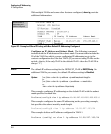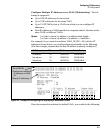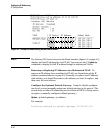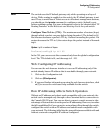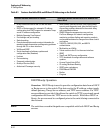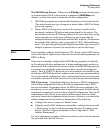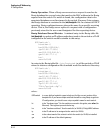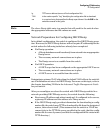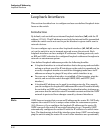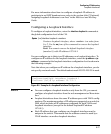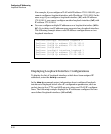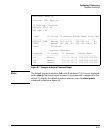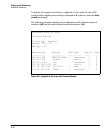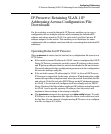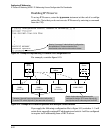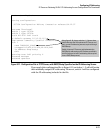
Configuring IP Addressing
Loopback Interfaces
Loopback Interfaces
This section describes how to configure and use user-defined loopback inter-
faces on the switch.
Introduction
By default, each switch has an internal loopback interface (lo0) with the IP
address 127.0.0.1. This IP address is used only for internal traffic transmitted
within the switch and is not used in packet headers in egress traffic sent to
network devices.
You can configure up to seven other loopback interfaces (lo1, lo2, lo3, and so
on) on the switch to use to transmit network across the network. Each
loopback interface can have multiple IP addresses. Routing protocols, such
as RIP and OSPF, advertise the configured loopback addresses throughout a
network or autonomous system.
User-defined loopback addresses provide the following benefits:
■ A loopback interface is a virtual interface that is always up and reachable
as long as at least one of the IP interfaces on the switch is operational. As
a result, a loopback interface is useful for debugging tasks since its IP
address can always be pinged if any other switch interface is up.
■ You can use a loopback interface to establish a Telnet session, ping the
switch, and access the switch through SNMP, SSH, and HTTP (web
interface).
■ A loopback IP address can be used by routing protocols. For example,
you can configure the loopback IP address as the router ID used to identify
the switch in an OSPF area. Because the loopback interface is always up,
you ensure that the switch's router ID remains constant and that the OSPF
network is protected from changes caused by downed interfaces.
Note OSPF does not require that you use an IP address as the router ID. OSPF only
requires the router ID to be a unique value within the autonomous system
(AS). However, if you configure the loopback IP address as the router ID,
OSPF can reach the switch if any switch interface is up. (Normally, OSPF
automatically configures the router ID with the IP address of a switch inter-
face. The disadvantage is that if the interface goes down, OSPF can no longer
ping the switch using the router ID even if other interfaces are operational.)
8-16



